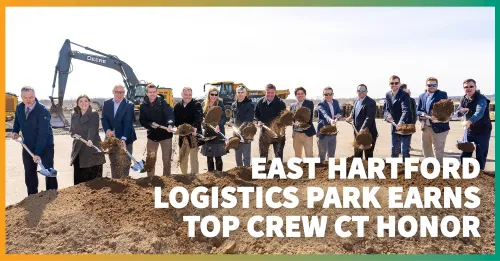Recent Articles
 Jun19HRP Associates Adds Staff in FarmingtonLocal environmental engineering firm hir...See Details
Jun19HRP Associates Adds Staff in FarmingtonLocal environmental engineering firm hir...See Details Jun19HRP Associates Adds Staff in PlymouthLocal environmental engineering firm hir...See Details
Jun19HRP Associates Adds Staff in PlymouthLocal environmental engineering firm hir...See Details Jun18HRP Associates Adds Staff in FarmingtonLocal environmental engineering firm hir...See Details
Jun18HRP Associates Adds Staff in FarmingtonLocal environmental engineering firm hir...See Details Jun18HRP Associates Adds Staff in Clifton ParkLocal environmental engineering firm hir...See Details
Jun18HRP Associates Adds Staff in Clifton ParkLocal environmental engineering firm hir...See Details Jun16HRP Associates Adds Staff in Clifton ParkLocal environmental engineering firm hir...See Details
Jun16HRP Associates Adds Staff in Clifton ParkLocal environmental engineering firm hir...See Details Jun10HRP Associates Adds Staff in FarmingtonLocal environmental engineering firm hir...See Details
Jun10HRP Associates Adds Staff in FarmingtonLocal environmental engineering firm hir...See Details Jun9Top 3 Things We Learned About PFAS Sampling & Testing w/ Lindsay BooneIn a recent episode of the PFAS Pulse Po...See Details
Jun9Top 3 Things We Learned About PFAS Sampling & Testing w/ Lindsay BooneIn a recent episode of the PFAS Pulse Po...See Details Jun3HRP Associates Adds Staff in Clifton ParkLocal environmental engineering firm hir...See Details
Jun3HRP Associates Adds Staff in Clifton ParkLocal environmental engineering firm hir...See Details May30Caring for the Whole Person: HRP Celebrates Mental Health Awareness MonthBy blending mindfulness, creativity, edu...See Details
May30Caring for the Whole Person: HRP Celebrates Mental Health Awareness MonthBy blending mindfulness, creativity, edu...See Details May27HRP Associates Adds Staff in Clifton ParkHRP Associates, Inc. hires new Associate...See Details
May27HRP Associates Adds Staff in Clifton ParkHRP Associates, Inc. hires new Associate...See Details May22East Hartford Logistics Park Earns Top CREW CT HonorIn April, HRP was pleased to learn that ...See Details
May22East Hartford Logistics Park Earns Top CREW CT HonorIn April, HRP was pleased to learn that ...See Details May6HRP Associates Adds Staff in Clifton ParkHRP Associates, Inc. hires new Associate...See Details
May6HRP Associates Adds Staff in Clifton ParkHRP Associates, Inc. hires new Associate...See Details May5New Certifications, Stronger Services: Talking GRI Certification with Jackie BaxleySustainability is often misunderstood as...See Details
May5New Certifications, Stronger Services: Talking GRI Certification with Jackie BaxleySustainability is often misunderstood as...See Details Apr16HRP Associates Adds Staff in GreenvilleHRP Associates, Inc. hires new Regional ...See Details
Apr16HRP Associates Adds Staff in GreenvilleHRP Associates, Inc. hires new Regional ...See Details Apr8The Foundation of the Mohawk Valley Brownfields Developer SummitThe Mohawk Valley is one of the oldest i...See Details
Apr8The Foundation of the Mohawk Valley Brownfields Developer SummitThe Mohawk Valley is one of the oldest i...See Details Apr1HRP Associates Adds Staff in Clifton Park HRP Associates, Inc. hires new Consultan...See Details
Apr1HRP Associates Adds Staff in Clifton Park HRP Associates, Inc. hires new Consultan...See Details



